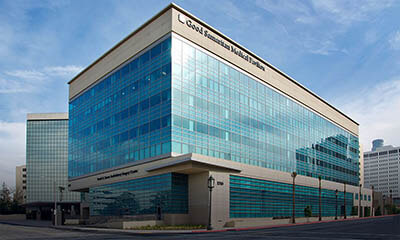Imagine brewing your morning coffee and realizing you cannot smell it. Or sitting down to a favorite meal only to find the flavors muted or gone entirely. For many people living with anosmia, the loss of the sense of smell is not just an occasional inconvenience. It is an ongoing disruption to daily life that affects far more than taste alone.
At the Los Angeles Center for Ear, Nose, Throat and Allergy, we work closely with patients who are struggling to regain their sense of smell. While some cases improve with time, others persist for months or even years, leaving people searching for answers. The encouraging news is that research is evolving quickly, and new treatments, including regenerative therapies such as platelet-rich plasma (PRP), are offering hope where there once was little. Before exploring these innovations, it is important to understand the condition itself and the current options available.
What Exactly Is Anosmia?
Anosmia occurs when the olfactory system, which includes the nose, the olfactory nerve, and the brain, is disrupted. Smell is not just about detecting scents in the air. It is an essential part of flavor perception, memory recall, and even emotional well-being. The loss of this sense can lead to changes in appetite, reduced enjoyment of food, and safety concerns if someone cannot detect smoke or gas leaks.
Sometimes the loss is partial, with certain scents still detectable. In other cases, it is a complete absence of smell. For some, it happens gradually over time, while for others it is sudden and unexpected.
Common Reasons Smell Loss Occurs
At LAENT, we see anosmia caused by a variety of conditions. One of the most common in recent years has been post-viral damage, especially after COVID-19. For some patients, the virus causes inflammation or injury to the olfactory nerve that does not fully recover on its own. Other respiratory viruses, including the flu and the common cold, can have similar effects.
Chronic nasal and sinus conditions are another frequent cause. Conditions such as chronic sinusitis, severe allergies, or nasal polyps can block scent molecules from reaching the nerve endings responsible for detecting smells. For these patients, treatment often focuses on reducing inflammation, clearing obstructions, and improving airflow.
Head injuries are another cause we encounter. Trauma can damage the pathways that carry scent signals from the nose to the brain, resulting in either temporary or permanent loss. Neurological conditions such as Parkinson’s disease and Alzheimer’s can also impair smell, sometimes long before other symptoms appear. In other cases, structural issues in the nasal passages, such as a deviated septum, may play a role.
Why Smell Loss Sometimes Lasts
Many people expect smell loss to resolve naturally, and in some cases, it does. Once the infection clears or the obstruction is removed, the sense of smell can return within weeks. However, for patients with damage to the olfactory nerve or the surrounding tissue, recovery can be much slower.
In post-viral anosmia, for example, the nerve fibers responsible for smell may take months to regenerate, and in some cases they do not recover completely without additional intervention. This is where newer treatments such as PRP therapy have generated excitement, as they aim to actively stimulate repair rather than simply waiting for the body to heal on its own.
Current Treatment Options
Treatment depends heavily on the cause of the anosmia. At LAENT, we begin by identifying and addressing any underlying issues. For those with chronic sinus problems, targeted medical therapy such as nasal corticosteroids or allergy treatments may improve airflow and reduce inflammation. If polyps or structural obstructions are present, surgical intervention might be recommended.
Smell training has also become a valuable tool, especially for post-viral cases. This involves repeatedly smelling specific scents such as rose, lemon, eucalyptus, and clove in a structured routine. Over time, this can help retrain the brain and olfactory nerves to recognize scents again. While this method has shown success for some, it requires consistency and patience, and results vary from person to person.
Unfortunately, these standard approaches have their limits. For patients whose nerve tissue is significantly damaged, medications and training alone may not be enough. This is why regenerative therapies are gaining attention, as they address the problem at a cellular level.
The Promise of New Therapies
One of the most exciting developments in recent anosmia research is the use of platelet-rich plasma. PRP is created from a patient’s own blood and contains concentrated platelets that are rich in growth factors supporting healing and tissue regeneration. In other fields of medicine, PRP has already been used to treat joint injuries, promote hair growth, and accelerate wound healing. Now, ENT specialists are exploring how it might repair damage to the olfactory system.
Early studies suggest that PRP injections in targeted areas of the nasal cavity can stimulate regeneration of nerve cells and reduce inflammation. Some patients have reported noticeable improvements in their ability to smell within weeks of treatment. While more research is needed, the safety profile of PRP makes it a promising option, especially for those who have exhausted other treatments.
Looking Ahead
At LAENT, our approach to anosmia care combines proven therapies with innovative new options. We understand how deeply this condition can impact daily life, and we believe patients deserve solutions that go beyond simply waiting to see if things improve. By staying at the forefront of research and offering advanced treatments such as PRP, we are giving people new opportunities to reconnect with the scents and flavors that make life richer.
If you or someone you know is struggling with a loss of smell, we encourage you to schedule an evaluation with our team. Even if you have been told there is nothing more that can be done, the landscape of anosmia treatment is changing, and you may have options that were not available just a few years ago.
In Part 2 of this series, we will take a closer look at PRP therapy itself, including how it works, what to expect during treatment, and why it is becoming an important tool in the fight against smell loss.

























